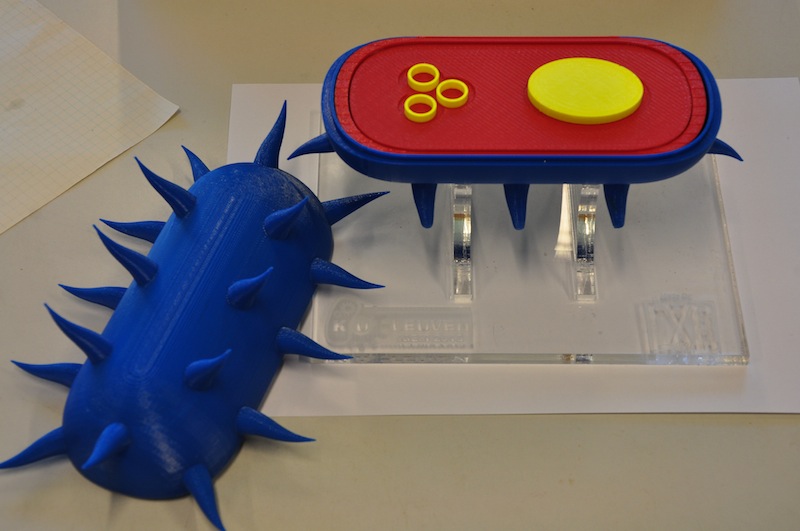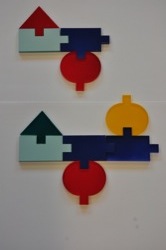Team:KU Leuven/Human Outreach/Education
From 2013.igem.org
Secret garden
Congratulations! You've found our secret garden! Follow the instructions below and win a great prize at the World jamboree!
- A video shows that two of our team members are having great fun at our favourite company. Do you know the name of the second member that appears in the video?
- For one of our models we had to do very extensive computations. To prevent our own computers from overheating and to keep the temperature in our iGEM room at a normal level, we used a supercomputer. Which centre maintains this supercomputer? (Dutch abbreviation)
- We organised a symposium with a debate, some seminars and 2 iGEM project presentations. An iGEM team came all the way from the Netherlands to present their project. What is the name of their city?
Now put all of these in this URL:https://2013.igem.org/Team:KU_Leuven/(firstname)(abbreviation)(city), (loose the brackets and put everything in lowercase) and follow the very last instruction to get your special jamboree prize!


Education
Our goal was to spark the interest of students in high school in science and synthetic biology and to tell them more about our project and the applications of synthetic biology. We have already visited several high schools in Flanders and we will visit some more after the Jamboree.
Schools visited so far:
17th of September: Sint-Dimpnacollege, GEEL
23th of September: Sint-Lodewijkscollege, BRUGGE
1st of October: European School of Mol, MOL
15th of October: Campus Sint-Aloysois, ZEPPEREN
17th of October: Sint-Jan Berchmanscollege, DIEST
22th of October: Sint-Ritacollege, KONTICH
Presentation
The workshop we prepared consists of a presentation, some exercises with 'LegoBricks' we designed and an experiment at the end. You can find the presentation in Dutch and in English and our text in Dutch.
We started at the very beginning and gave a short introduction about DNA and its biochemistry. In general the students already had an introduction to DNA in class, but it was still very new to them. We then informed them about bacteria and which bacteria we use in the lab. We made a 3D-bacterial model, which gave the students an idea of what a bacterium looks like. The model was printed by Fablab and consists of 3 layers. Inside, there is a representation of the cytoplasm, the plasmid and the bacterial genome.
After this we came to the core of our workshop and we explained what synthetic biology and its applications are. For instance, the development of modified yeast that can produce artemisinin to treat malaria. The KU Leuven 2013 iGEM project was explained as well as the mechanisms and properties of our bacteria. We ended the presentation with the ethical and social implications of synthetic biology in general and in our project.

Exercises
After the presentation, we gave the students two exercises about building new systems with plastic puzzle pieces. We made promoters, genes, regulators and proteins out of plexiglas in different colours.
First they had to make a system of a biosensor (iGEM-project of Groningen 2009). The biosensor can detect arsenic and the bacteria can absorb this arsenic out of the water. To do this, you need an activator (arsenic) of an inducible promoter and a gene. The gene codes for a protein that helps with the production of hydrogen.
In the second exercise, we offered our ED Frosti (iGEM project of KU Leuven 2011). ED Frosti can defrost ice and freeze water. We made a simplified system of ED Frosti, with two activators, three promoters, four genes and a feedback-loop.





Experiment
The experiment proves that genes are inducible so bacteria can adapt to different circumstances. If there’s lactose in the environment, E. coli will produce β-galactosidase to hydrolyse the lactose. When there’s no lactose, β-galactosidase won’t be produced. We didn’t use lactose, but we used ONPG. ONPG is a substrate of β-galactosidase and will turn yellow after hydrolysis. The yellow colour is proof of the presence of β-galactosidase. We couldn’t use E. coli in the high-school because of the safety regulations, but we explained the principle of inducible genes and showed the enzymatic reaction with β-galactosidase and ONPG. The students did this experiment themselves and they worked with micropipettes for the first time.

Feedback from the schools
On the 17th of September, Flore and Sabine went to the Sint-Dimpnacollege. It was the first time we gave the workshops and everything went well. We gave the workshop three times to students in the sixth year of science-mathematics and latin-science. The students were enthusiastic and very interested. We got positive feedback from the teachers and students.
On the 23th of September, Lukas and Bert went to the Sint-Lodewijkscollege. They were also very enthusiastic and interested in synthetic biology and our project. We got a lot of good responses to our workshop.
We also went to a European school. Aurelie and Lukas gave the workshop to a selection of international students. The students were from the Dutch, English and French section. Here we gave the presentation in English and they were also very enthusiastic.

 "
"







